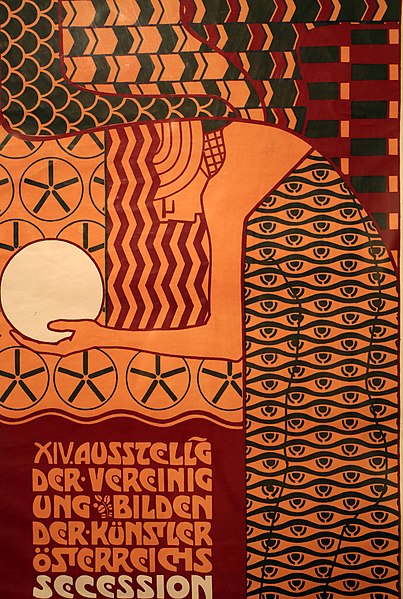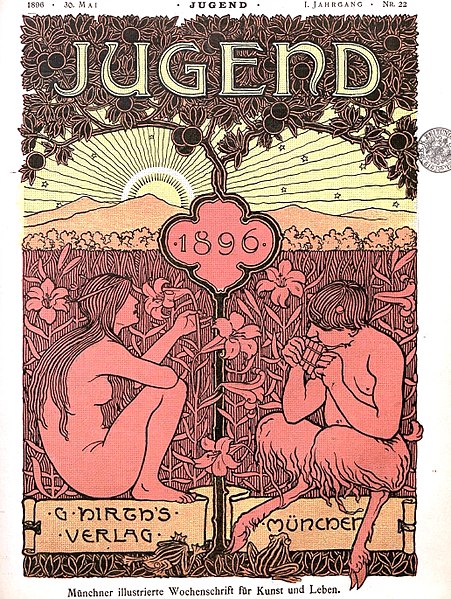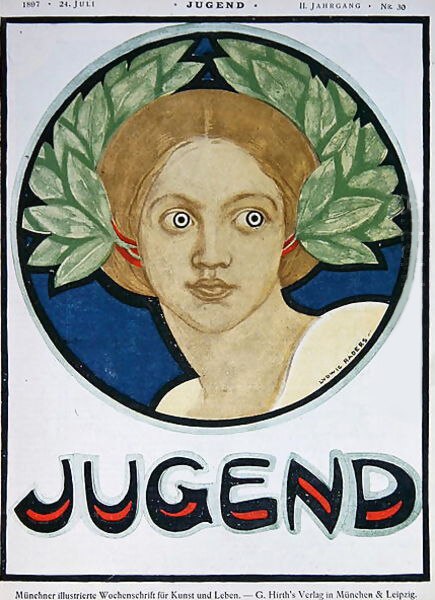In art history, secession refers to a historic break between a group of avant-garde artists and conservative European standard-bearers of academic and official art in the late 19th and early 20th century. The name was first suggested by Georg Hirth (1841–1916), the editor and publisher of the influential German art magazine Jugend (Youth), which also went on to lend its name to the Jugendstil. His word choice emphasized the tumultuous rejection of legacy art while it was being reimagined.
Paul Hoecker's 1901 cover for the influential Munich-based magazine Die Jugend that inspired the Jugendstil Secession.
The François Joseph Heim painting Charles X Distributing Awards to the Artists at the Close of the Salon of 1824 illustrates how the French salon system worked.
Vienna Secession — Alfred Roller's lithograph for the 14th International Art Exhibition in Vienna, created in 1902.
Dresden Secession — An Otto Dix etching and aquatint 'Stormtroopers Advance Under a Gas Attack' (Sturmtruppe geht vor unter Gas) that illustrated 'The War' by Karl Nierendorf, 1924.
Jugend (1896–1940) was an influential German arts magazine. Founded in Munich by Georg Hirth who edited it until his death in 1916, the weekly was originally intended to showcase German Arts and Crafts, but became famous for showcasing the German version of Art Nouveau instead. It was also famed for its "shockingly brilliant covers and radical editorial tone" and for its avant-garde influence on German arts and culture for decades, ultimately launching the eponymous Jugendstil movement in Munich, Weimar and Germany's Darmstadt Artists' Colony.
A Fritz Dannenberg 1897 cover.
The magazine's inaugural cover in 1896 depicts a nymph listening to a pan pipe played by Pan himself
1896 cover by Otto Eckmann.
A Ludwig Raders cover in 1897.








